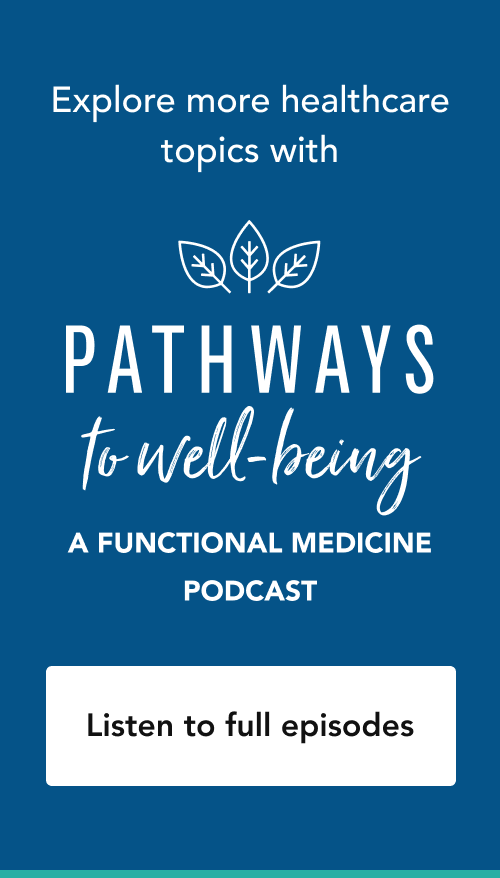podcasts
Clinical Application & Treatment for Neurodegenerative Decline
In the following video, Kristi Hughes, ND, interviews leading neurologist David Perlmutter, MD, about his approach to brain health. “To take a Functional Medicine approach to neurology has been an absolute game changer. Why?” asks Dr. Perlmutter. “Because suddenly there are a whole host of tools in an otherwise empty toolbox.” Studies continue to find evidence that variations in diet and exercise can have a marked effect on reducing the risk for Alzheimer’s and improving brain performance.
Dr. Perlmutter outlines the following key clinical points:
- Inflammation. “Mechanistically, I think that the biggest issue in Alzheimer’s is inflammation, and while that may seem surprising, that’s what our best literature has been saying for at least 20 years. These microglial cells in the brain light up and produce inflammatory chemicals—the brain is inflamed, as certainly a joint is inflamed with arthritis.” In a 2018 study published in JAMA, peripheral chronic low-grade inflammation in participants with ApoE4 was associated with shortened latency for the onset of Alzheimer’s disease (AD).2 The study found that rigorously treating chronic systemic inflammation based on genetic risk may be effective for the prevention and intervention of AD.2
- Food & the Gut. “Where does the inflammation come from? Outside the brain. There are gut-related issues. The idea of getting out of the brain and looking at gut bacteria is quite difficult for brain specialists.” However, the gut-brain axis is increasingly recognized as an important pathway of communication and of physiological regulation, and gut microbiota may play a significant role in this mutual relationship.3
- Exercise. “Aerobic exercise is fundamentally important in terms of the brain. It turns on a gene pathway that makes brain-derived neurotrophic factor (BDNF), which enhances the growth of new brain cells, enhances the connection of brain cells, helps protect brain cells against trauma, etc. The best way to enhance BDNF is through aerobic exercise.” Accumulating evidence indicates that exercise may improve learning and memory as well as attenuate neurodegeneration, including AD.4 In addition to improving neuroplasticity, exercise also modulates systems like angiogenesis and glial activation. It also enhances the clearance of A?, one of the main culprits of AD pathogenesis.4
An estimated 5.7 million Americans are living with Alzheimer’s disease, and it is the sixth leading cause of death in the US—more than breast cancer and prostate cancer combined.1 By 2050, this number is projected to rise to nearly 14 million.1 However, most Alzheimer’s treatments only temporarily improve symptoms of memory loss and problems with thinking and reasoning. Functional Medicine offers a unique approach that addresses the many underlying causes of dementia to improve and even restore cognitive function.
References
- Alzheimer’s Association. 2018 Alzheimer’s disease facts and figures. Alzheimers Dement. 2018;14(3):367-429. doi:1016/j.jalz.2018.02.001.
- Tao Q, Ang TFA, DeCarli C, et al. Association of chronic low-grade inflammation with risk of Alzheimer disease in ApoE4 carriers. JAMA Netw Open. 2018;1(6):e183597. doi:1001/jamanetworkopen.2018.3597.
- Dumitrescu L, Popescu-Olaru I, Cozma L, et al. Oxidative stress and the microbiota-gut-brain axis. Oxid Med Cell Longev. 2018;2018:2406594. doi:1155/2018/2406594.
- Lin TW, Tsai SF, Kuo YM. Physical exercise enhances neuroplasticity and delays Alzheimer’s disease. Brain Plast. 2018;4(1):95-110. doi:3233/BPL-180073.


